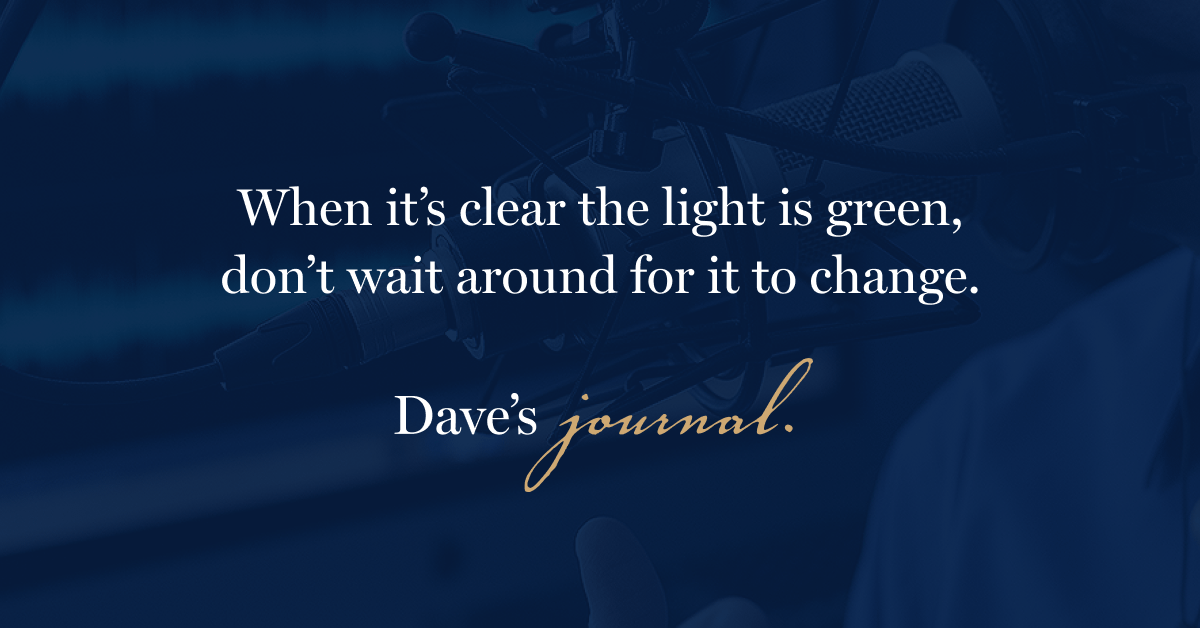Many years ago, I was standing in the lobby of a customer’s building, waiting between meetings. An employee I had worked with years earlier noticed me and stopped to say hello.
She explained that she was now working directly for one of the top people in the company — and invited me to come up and see her office the next time I was in the building.
So, I accepted her invitation.
I’ve long since forgotten most of that second conversation, but something she said made it abundantly clear that I had a green light to ask this question:
Do you think there’s a chance your boss would be open to a quick chat to explore if we could help more people in your organization?
Most of the details of what happened next aren’t significant for this entry. This part is:
A few weeks later, I was briefing the entire executive leadership team of a $10 billion business.
I wish I could tell you that I was some kind of genius, but in retrospect, the green light in the situation was obvious. It wasn’t so much that I noticed it, but that I acted on it.
The hard part here is that the lights in most organizations are rarely green or red, but actually some shade of yellow. That’s why most of us spend time planning, taking measured steps, and testing progress. And most of the time, that’s absolutely the right decision.
The missed opportunity for a lot of us is that we’re so conditioned to move regularly and methodically, that sometimes we keep doing that same thing when the green light is apparent. We hesitate when the customer says:
These are the best results we’ve ever had. What else do you recommend we do?
Or we don’t follow up when the boss says:
Let me know what resources you’re going to need next year.
Or we don’t say where we need help when a colleague wonders:
What can I say to others that will make this go easier for your team?
Or we’re not willing to say something when an influencer in our industry asks:
How can I be helpful to you?
I’ve sat through more than my fair share of these green lights. I was passed over for promotions earlier in my career because I didn’t move on things quickly enough.
I’m not suggesting that you try to create green lights where they don’t exist. You’re probably better off, both on the road and in your career, erroring on sitting through a green light than in making the mistake of running a red one.
Reading the tea leaves of what shade of yellow the light is today in your organization or industry is super hard. I don’t have a good answer for how to do that. 90% of the time, you’ll never know for sure.
But I’m pretty sure these days about two things:
- Every once in awhile, it’s abundantly clear that the light is green.
- Once it’s green, it’s going to change back to yellow or red again, very soon.
Be cautious when you’re not sure the color of the light. But when it’s really clear that the light is green, don’t wait around for it to change. That’s the moment to go like hell.
Dave's Journal is available by audio on Apple Podcasts, Google Podcasts, Overcast, Stitcher, and Spotify.





